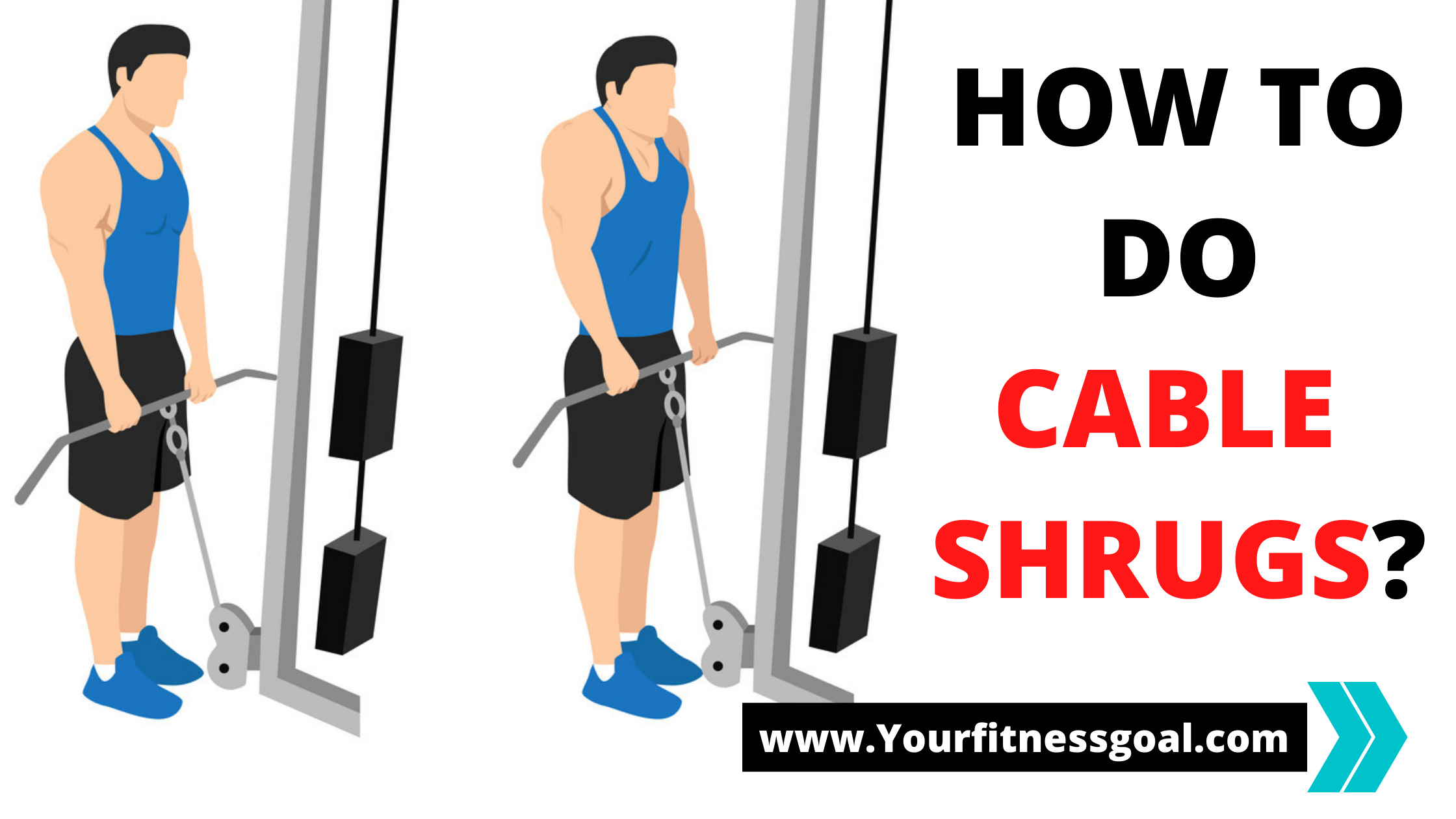Cable shrugs are an excellent workout for developing the traps, shoulders, upper back, biceps, and forearms.
It also engages the core muscles, which help to stabilize the upper body and support the lower back.
Cable Shrugs are an excellent workout because it maintains continual stress on the muscles involved while also providing a powerful contraction at the top and a stretch at the bottom.
In This Exercise:
- Equipment: Cable machine
- Difficulty: Beginner
- Mechanics: Isolation
- Target Muscle Group: Trapezius
- Type: Strength/hypertrophy
How to do cable shrugs or cable shoulder workouts
- Set a cable machine’s rope pulley to handle to the lowest setting.
- Take hold of the rope pulley handle’s ends. To put stress on the cable, take a few steps back. Assume a shoulder-width stance; lean back slightly, tense your core and bend your knees and elbows slightly.
- Take a deep breath in, exhale, and shrug the rope pulley handles up toward your ears. Pull your shoulders back and hold for a count of “one.”
- Resist the weight as you return to your starting posture. At the bottom, be careful to obtain a nice stretch on the traps and shoulders.
- Repeat the exercise until you have completed the targeted number of reps.
Form and Technique
This pose strengthens the traps, back shoulders, and upper back.
Do not shrug the weight up by bending at the hips or using momentum.
Maintain a small bend in your elbows to maintain strain on your shoulders rather than your biceps.
Muscle Gain Routine: 4-5 sets x 6-8 repetitions
Variations: Cable side shrug, Barbell shrug, Dumbbell shrug, Trap bar shrug
Strength routine: 3 sets of 12-15 repetitions.
Cable shrugs tips
- Because the cable shrug delivers consistent tension independent of arm position, you may increase contraction by shrugging up and back.
- Begin with modest weights and concentrate on building a strong mind/muscle connection before gradually increasing the weight. To fully engage the traps, squeeze for at least one second at the top.
- If you don’t feel a proper contraction, decrease the weight and continue.
- Unless you’re practicing power shrugs, don’t use the momentum from your lower body to lift the weight.
Variations OR Cable shrugs alternatives
The cable shrug is a popular shoulder shrug variant. However, there are numerous variants, each with a distinct benefit. To maximize development, utilize diversity in your exercise. Here are below cable trap exercises or cable traps workouts which you perform alternative to shrugs as well.
Dumbbell shrug
Many people prefer the dumbbell shrug over the barbell shrug because it puts the arms in a perfect position for maximum trap contraction while keeping the hands neutral. You also don’t have to go overboard with this variant. Use light weights and concentrate on the mind/muscle connection.
Cable side shrug
If you’re going to employ cables, the cable side shrug is a must-have variant. This is due to several factors. Because each arm has its weight stack, you may utilize more weight overall. Your arms are naturally abducted, which allows for a more prominent contraction.
The single-arm side shrug is also a fantastic exercise to include in your training since it allows you to focus on one side while also forcing the core muscle to activate and aiding in the development of stability. This difference may even result in a better contraction in the traps for certain persons.
Trap bar shrug
For many lifters, the trap bar is a better variant than the barbell shrug because, as with dumbbells and the cable shrug variation described above, the arms are at the sides in a more natural position, making it easier to maintain excellent posture and perhaps producing a better contraction. Not to mention that it can still be loaded heavily.
Cable shrugs Muscles Worked
Shrugs strengthen the trapezius or traps, a muscle that runs across the upper back from the occipital bone to the lower thoracic vertebrae and laterally to the scapula spine. The traps are made up of upper, middle, and lower muscle fibers that all work together to support and move the scapula. The traps play an essential role in posture support.
- Trapezius Upper Fibers
- Trapezius Middle Fibers
- Trapezius Lower Fibers
How To Incorporate The Cable Shrug Into Your Trap Training Regime
It doesn’t matter if you complete the cable side shrug after or before your free weight trap movements. That’s because, when done correctly, the cable side shrug is a fantastic workout that will help you grow muscle in the same way.
However, to enhance your overall growth, we strongly advise combining free weights, cables, and even machines, all of which provide many of the same advantages. However, the frequency and number of sets and reps for traps training will be determined by the pattern of your workout. Not to mention that the traps are severely worked during back workouts and deadlift variants.
In general, we recommend two to three trap workouts that target the upper, middle and lower traps. Exercising volume (sets/reps) will vary on how frequently you work traps, but once or twice a week is enough if you’re training at a high intensity, especially because the traps are stimulated during back training, as previously indicated.
Conclusion
The cable shrug should be a regular part of your trap training routine. It provides something that free weights do not: adaptability. That doesn’t always imply it’s a better variant, but we advocate including it in your other workouts to optimize trap growth. Use proper technique and begin mild to strengthen your mind/muscle connection, then gradually raise the poundages to apply progressive overload and watch your traps expand!

Hey, y’all! I’m Akshay!
I’m SO excited you’re here! I’m super passionate about nutrition and specialize in teaching others how to lose weight through healthy, low-carb eating along with Yoga and exercises. Here at Yourfitnessgoal, we believe in quality over quantity and that diet is EVERYTHING when it comes to your health and well-being. In short, we believe in a Fit and healthy lifestyle.

